Twist Drill
A rotary cutting tool featuring helical flutes for chip removal and a central web, used for machining cylindrical holes in solid materials.
Conical Drill Point
The cutting section at the front end of the drill formed by a conical surface, a geometric feature that determines initial centering and penetration performance.
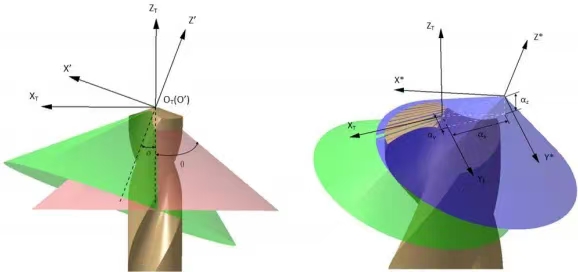
Twist Drill
A rotary cutting tool featuring helical flutes for chip removal and a central web, used for machining cylindrical holes in solid materials.
Conical Drill Point
The cutting section at the front end of the drill formed by a conical surface, a geometric feature that determines initial centering and penetration performance.
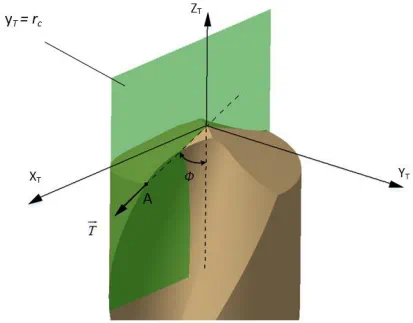
Chisel Edge Angle
The angle between the chisel edge and the main cutting edge as projected in the end view, which correlates with centering resistance and chisel edge strength.
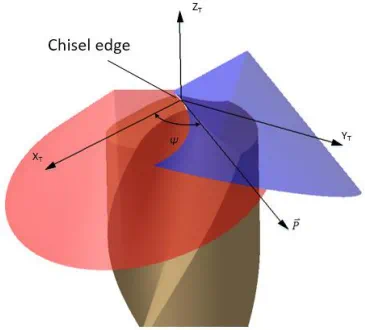
Lip Relief Angle
The angle between the flank face of the main cutting edge and a plane perpendicular to the cutting direction, which ensures edge sharpness and reduces friction.
Semi-Point Angle
Half the value of the point angle of a conical drill, commonly used as a parameter in grinding calculations and geometric modeling.
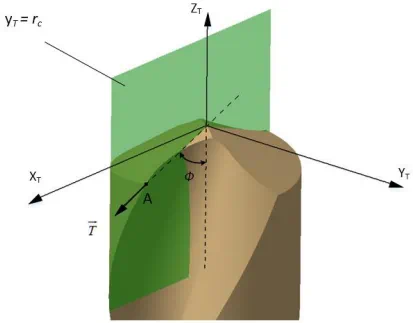
Axial Relief Angle
The inclination angle of the flank surface measured along the drill axis, which controls friction between the cutting edge and the hole wall while maintaining edge strength.
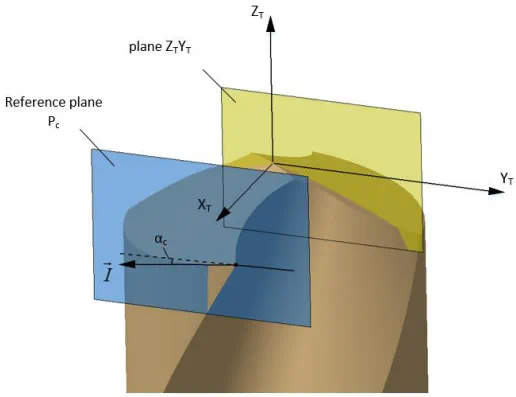
Structural Relief Angle
The angle between the flank face of an integral tool and a reference plane, considering the overall tool structure. It is designed to ensure adequate clearance behind the cutting edge and maintain structural strength.